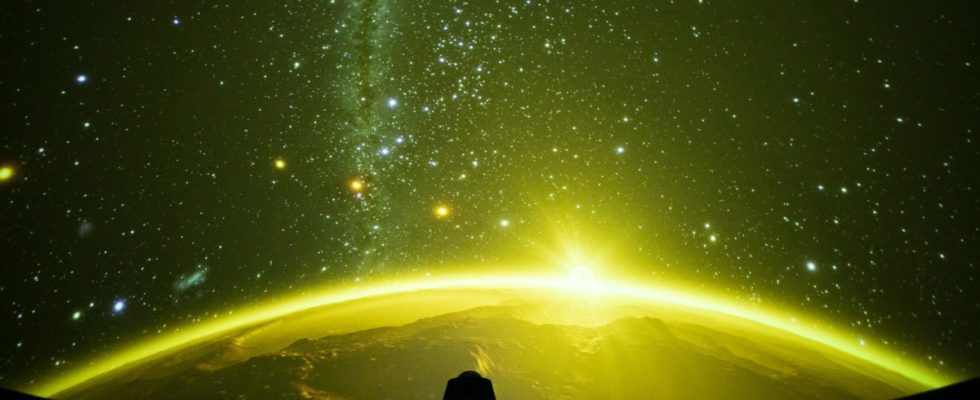The mobile dome, which is currently located in the entrance area of the Deutsches Museum, has a diameter of ten meters. Anyone who goes there can travel virtually through space – from Earth via Mars to the moons of Jupiter (where a real mission by the European Space Agency Esa started a few days ago), out of our solar system to the end of the universe. It is a trip that is puzzling in many ways for the layman, but very impressive.
The first projection planetarium, which was presented to the world public on October 21, 1923 in Munich, on the site of the Deutsches Museum, which was still under construction at the time, also had a diameter of around ten meters. The Deutsches Museum is celebrating the anniversary from May 5th with a special exhibition. It was not possible to reach the end of the universe a hundred years ago. And yet the invention greatly impressed people. It was the first time that they were able to experience the movement of the stars not only outdoors at night, but also in a room during the day, apparently realistically, albeit in fast motion.
“Anyone who had the opportunity to observe the enormous rush to the planetariums and the bright enthusiasm of the visitors during the first week of visiting the Deutsches Museum had to be convinced that an educational resource of inestimable value had been created here,” wrote in January 1924 the Munich Latest News, the predecessor of the SZ. The projection planetarium was a “huge success,” says exhibition curator Christian Sicka. It was an “invention that brought heaven to earth”. There is simply the “aha effect when the projector turns on”, even today.
Astronomy curator Christian Sicka explains the different star projectors from the respective time.
(Photo: Florian Peljak)
Although the projection planetarium in Munich was the first, it was by no means the only one. The possibility of looking at the starry sky or even space by means of projection should spread all over the world and become more and more sophisticated. There are now around 4,000 projection planetariums worldwide, says Wolfgang Heckl, Director General of the Deutsches Museum. And more than a billion people have already visited one. “We are proud that our house was able to get started,” he says.
Oskar von Miller, the founder of the Deutsches Museum, had the basic idea for the planetarium before the First World War and was not discouraged even after initial rebuffs. The company Carl Zeiss Jena, which only saw itself as being responsible for optics and not for technology, initially “respectfully” informed von Miller that “we cannot deal with the production of the planetarium, since such work is not within the scope fit our production”. However, three months later she accepted the order from Munich – and the engineer Walther Bauersfeld developed the projection planetarium, a “device for projecting celestial bodies onto a spherical projection wall”, as the patent specification later called it.
With his original idea, Oskar von Miller was not at all concerned with explaining the starry sky, as one might assume today. He wanted to show something completely different, as curator Sicka explains, the “change in the world view from the Ptolemaic to the Copernican”, i.e. the change from the idea that the earth is at the center of the planetary system to the observation that this is the sun.
In order to make this clearer, there were two rooms in 1923: The Ptolemaic idea was made clear by means of the projection planetarium: 4500 fixed stars, about as many as can be seen with the naked eye on dark nights, moved around people here. In Copernican space, on the other hand, humans orbited a model of the sun themselves using a vehicle on the ground.
“Alternate Planetarium”: The dome was erected especially for the special exhibition.
(Photo: Florian Peljak)
You can get an idea of what that looked like in the special exhibition. You can also see the first planetarium projector and other subsequent models that were used in the Deutsches Museum. But there are also exhibits from earlier times, such as a 16th-century astrolabe, a disk-shaped instrument used to calculate celestial motion, which bear witness to man’s centuries-long preoccupation with the night sky.
Current recordings from space, which were sent to earth by the Hubble telescope, among others, can also be seen. The heart of the exhibition is the modern planetarium with projector and beamer. The dome was set up as an “alternative planetarium” in the anniversary year, as director Heckl says, since the actual planetarium is currently being modernized.
The special exhibition “100 Years Planetarium” can be seen from May 5, 2023 to January 28, 2024 in the Deutsches Museum.

